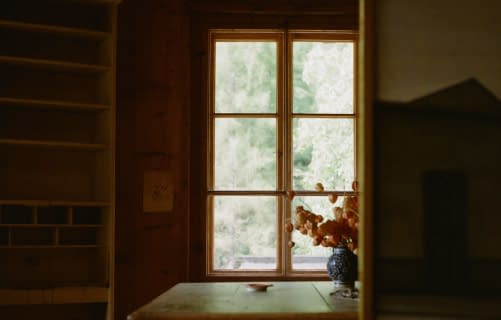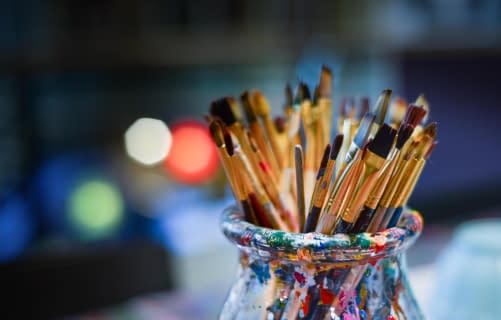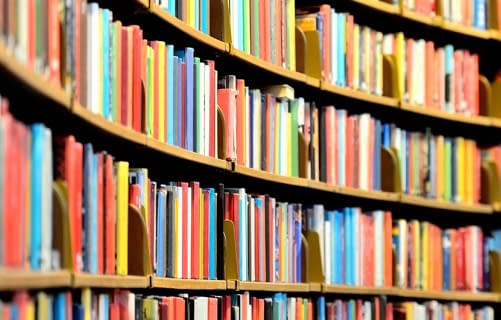Short Summary
Nowhere else can you get as close to artists as when visiting their studios and homes. In this blog, we follow in the footsteps of what is probably Switzerland's most famous family of artists: the Giacomettis – in particular Alberto and Giovanni Giacometti.
Low clouds hang over the Bergell Valley, Bregaglia. A small group of people has gathered in front of an old wooden house in the small Graubünden village of Stampa. It looks like an inconspicuous wooden chalet. Seemingly inconspicuous. And yet marked by such importance: a village and a house that produced Switzerland's most famous family of painters: the Giacomettis.
Alberto Giacometti is arguably Switzerland's most famous artist. Anyone interested in art cannot ignore this distinctive name. The painter and sculptor, who became a millionaire overnight, never cared about his fame. He was directly influenced by his family, who were equally important artists.
His father, Giovanni Giacometti, was one of the most important representatives and pioneers of post-impressionist painting. He was born in this small village in Graubünden, attended primary school here and was the first in the family to turn his artistic talent into a profession. His cousin, Augusto Giacometti, later followed his example and also became a painter.
It is remarkable that such a small village in Bregaglia, Maloja, produced such great artists. A single large road runs between the old wooden and stone houses. To the left flows the Meira River. In the distance, the mighty mountains of Bergell can be seen. Nothing more and nothing less, but that is Stampa.
On the other side of the road, opposite the wooden house, stands the family's former residence, which now houses the Centro Giacometti, a cultural centre.
Insights into Alberto and Giovanni Giacometti's studio in Stampa, Bergell
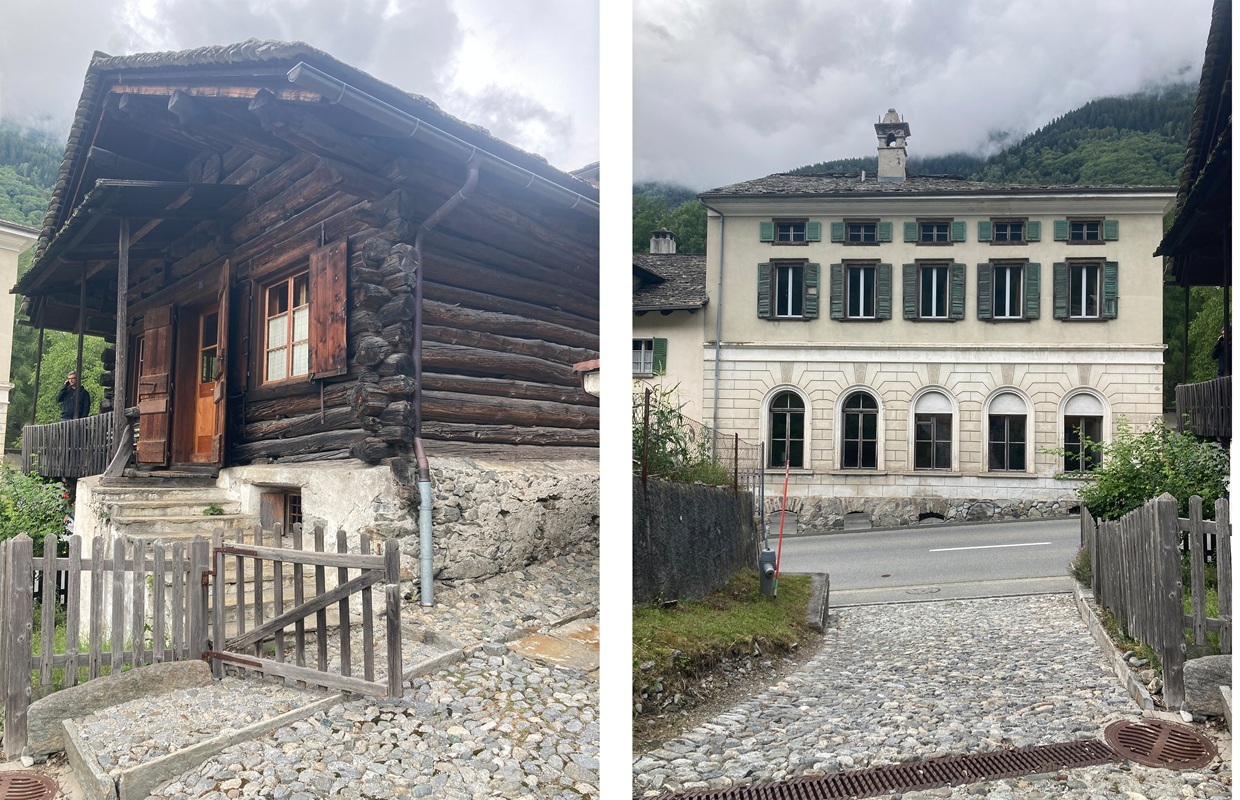
A woman's voice rings out, and the small group of people prick up their ears: ‘So, now we are standing in front of the Giacomettis' studio.’ Their gaze falls on the stone wall in the basement of the house, on the number plate 1, which bears the inscription ‘Gassa Alberto Giacometti’. A stone staircase leads up to the large, bright studio room. Upon entering the studio, there is a very special atmosphere. Nowhere else do you feel as close to the Giacometti artists, Giovanni and Alberto, as here.
The studio guide, Menga Negrini, warmly welcomes the group. One of her first sentences is: "Today I'm going to tell you about the Giacomettis, a few things that may be different from what you know. I knew (Alberto) Giacometti personally."
And indeed, Giovanni Giacometti's wife, Annetta Stampa, was Negrini's grandmother's cousin. As a little girl, she probably heard a lot of gossip about the Giacometti family.
Almost immediately, she asks the visitors to sit down if they wish. Along the large window front next to the entrance are wooden benches that invite you to sit down. On the right is a large work table with a blue vase (not original) containing dried branches of physalis, a Coca-Cola ashtray and a mixing plate with numerous tubes of paint on it. Yes, Alberto liked physalis. So it's not staged. Even the used tubes and the colour palette are original! On the left side of the door is a wicker chair and a low table, which are also original.
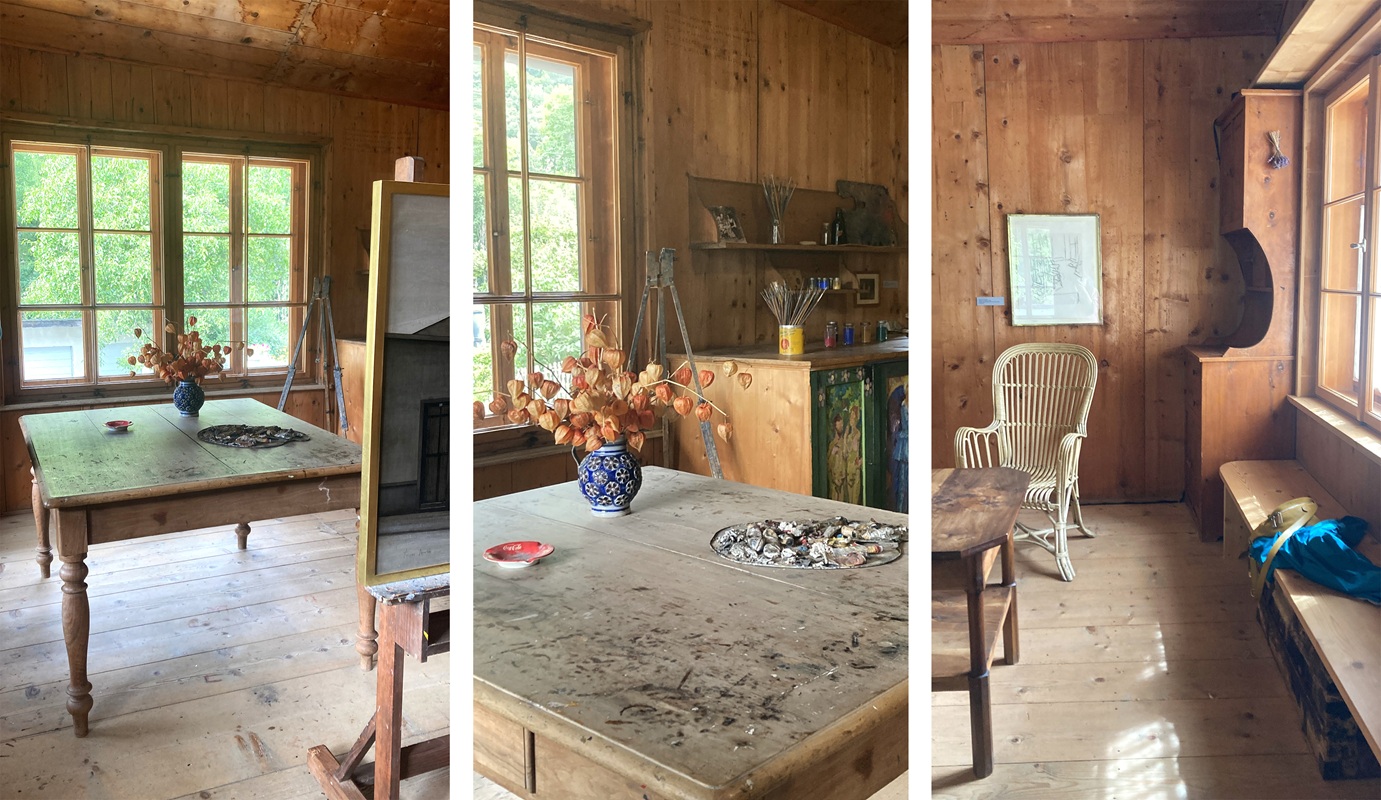
As an art conservator and restorer, the idea of touching the artist's real objects and even ‘using’ them while sitting down was initially frightening to me. While some people actually sat down, I kept my distance from the table, the bed, the easel in the middle of the room, the tables and the cupboards. Although most of the furniture was in the studio during Giacometti's lifetime, some objects, such as the bed and the lamp, did not originally belong here, but came directly from the Giacomettis' home. There would also have been a stove, but it is no longer installed for reasons of space.
Out of awe and respect for the artists who once worked here, I don't dare touch anything. Here in this beautiful old wooden hut, both father and son gave free rein to their creative thoughts. Traces of paint and sketches can be found on the walls. The floor and tabletop are covered with imprints of cigarette butts and matches... Oh yes, Alberto was a heavy smoker!
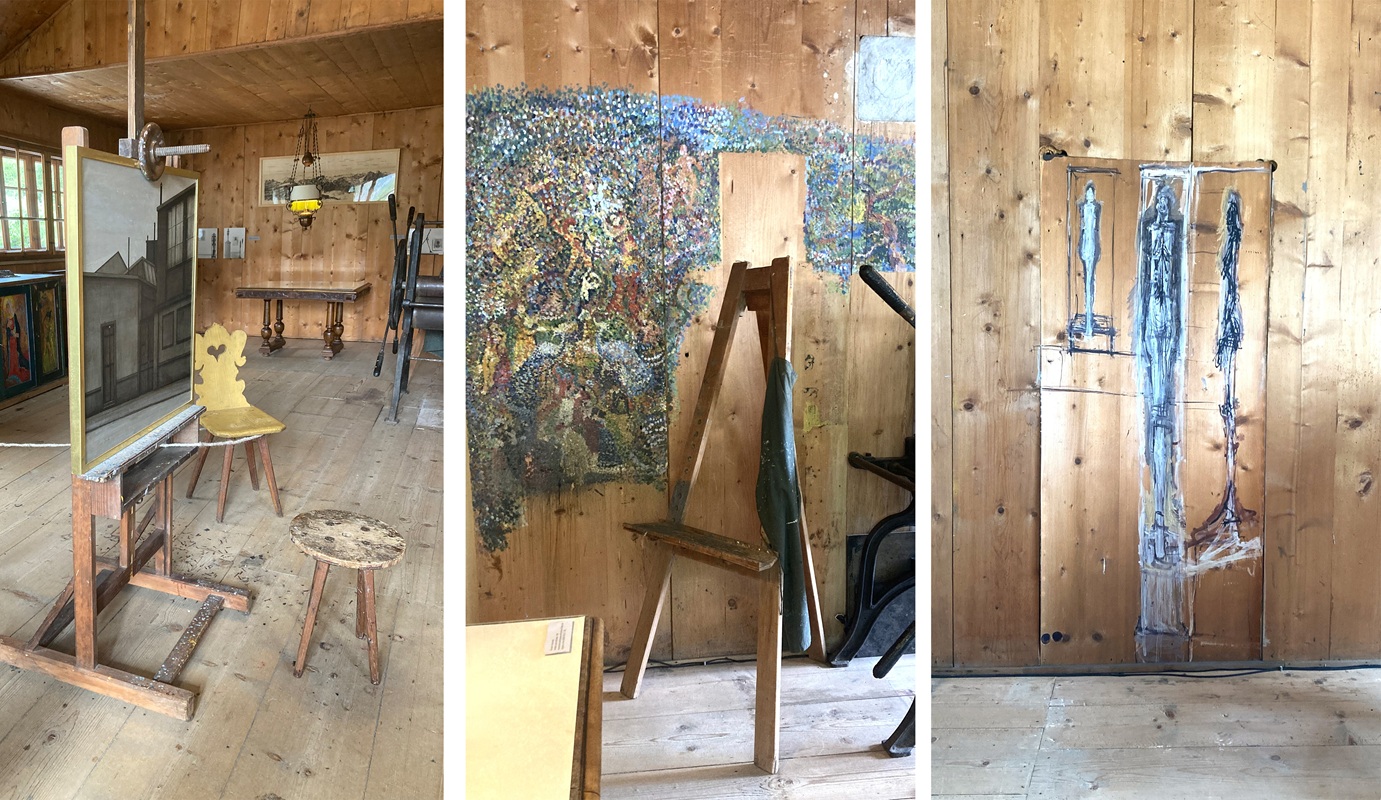
A chain smoker and a perfectionist ... He was strict with his models. In the evening, he outlined the feet of his painter's stool and the stool for his model on the floor with paint so that he could put the chairs back in exactly the same place the next day.
If you let your gaze wander further into the studio, past the work table and the easel, your eyes will wander into the back room. In front of it stands a chest of drawers which Giovanni Giacometti, influenced by his trip to Italy, painted with sacred images, including scenes of Adam and Eve and the Annunciation of Mary. What is special about these paintings is that they are the only surviving sacred images by Giovanni G.
The chest of drawers was used to store painting utensils. Today, the original brushes and used colour palettes of Giovanni and Alberto Giacometti can still be admired. Alberto is said to have bought the brushes in Paris. He always insisted on the best quality, even if it came at a price, although he is otherwise said to have had no interest in luxury. At first, Alberto also made his own pigments, but later he bought ready-made paints.
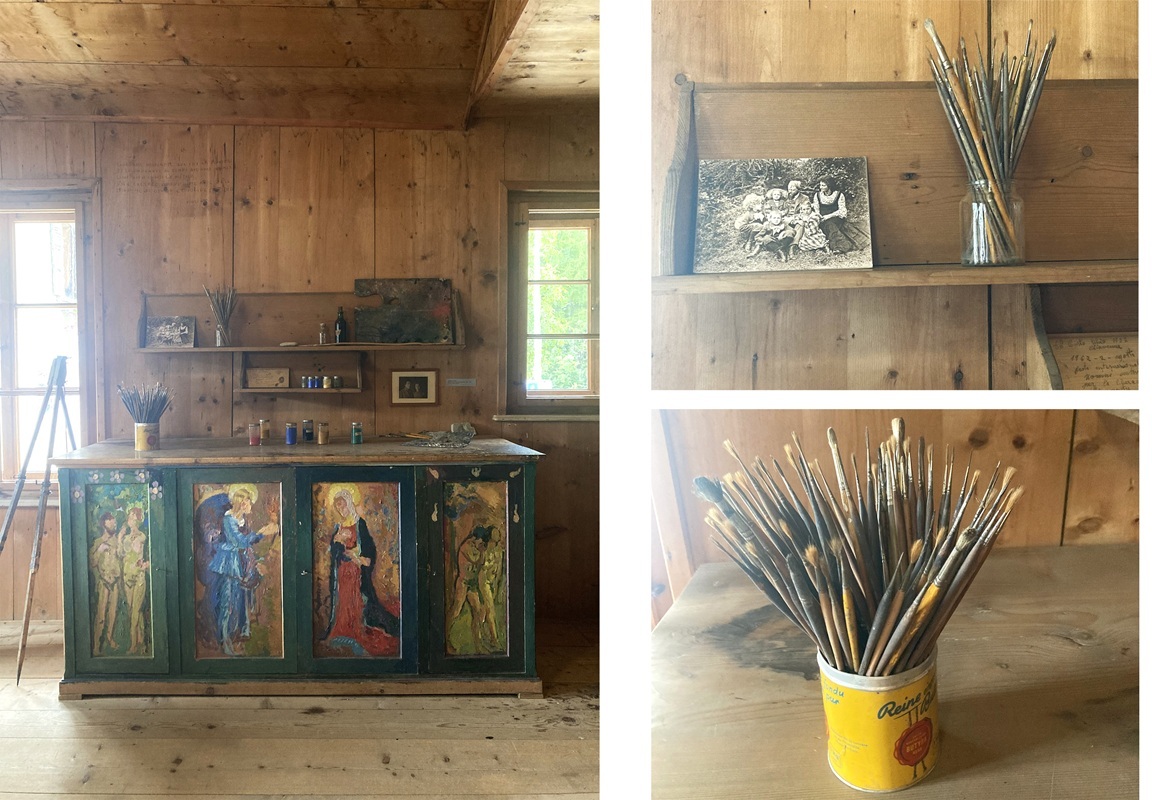
Next to the painting materials are photographs of the Giacometti family. One stands out in particular: the family portrait showing Giovanni Giacometti with his wife, Annetta, and his three sons, Alberto, Diego and Bruno, as well as his daughter Ottilia. While Giovanni looks down lovingly at his children, Annetta and Alberto look directly at each other. This is symbolic of the close relationship between son and mother, who apparently shared a very strong bond.
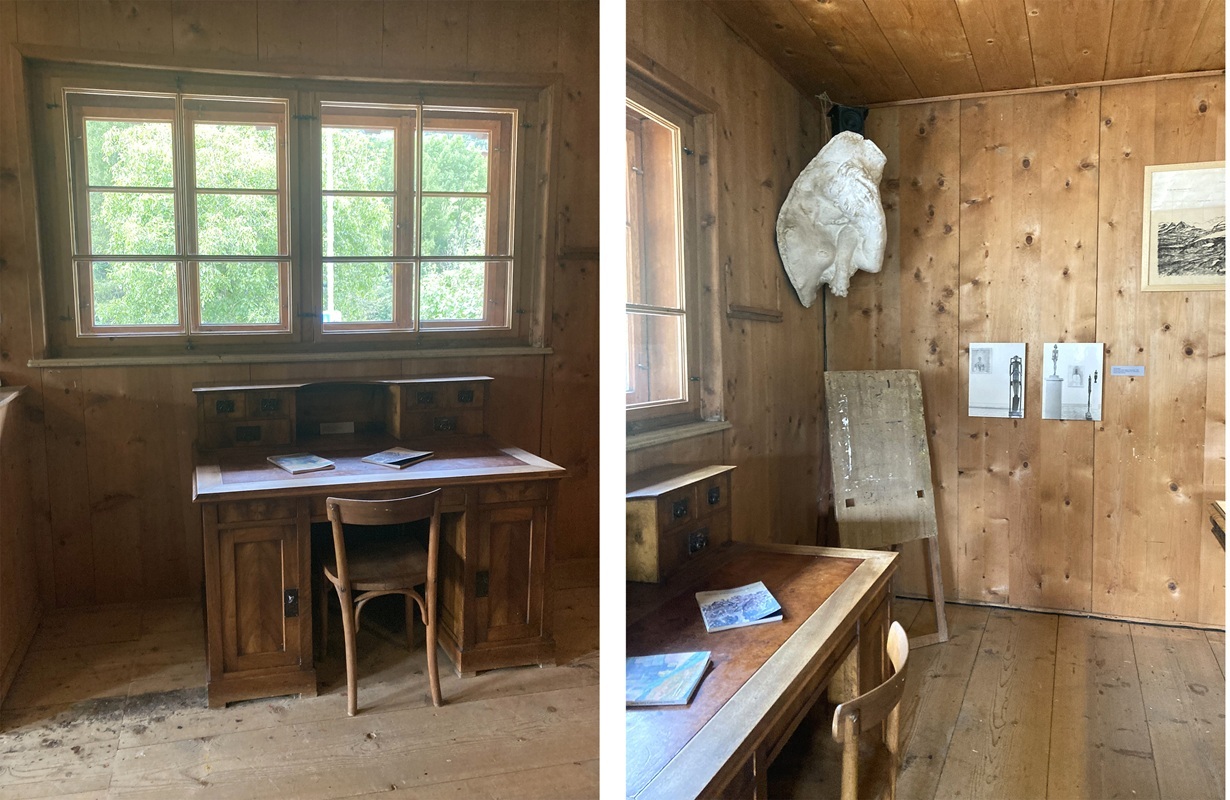
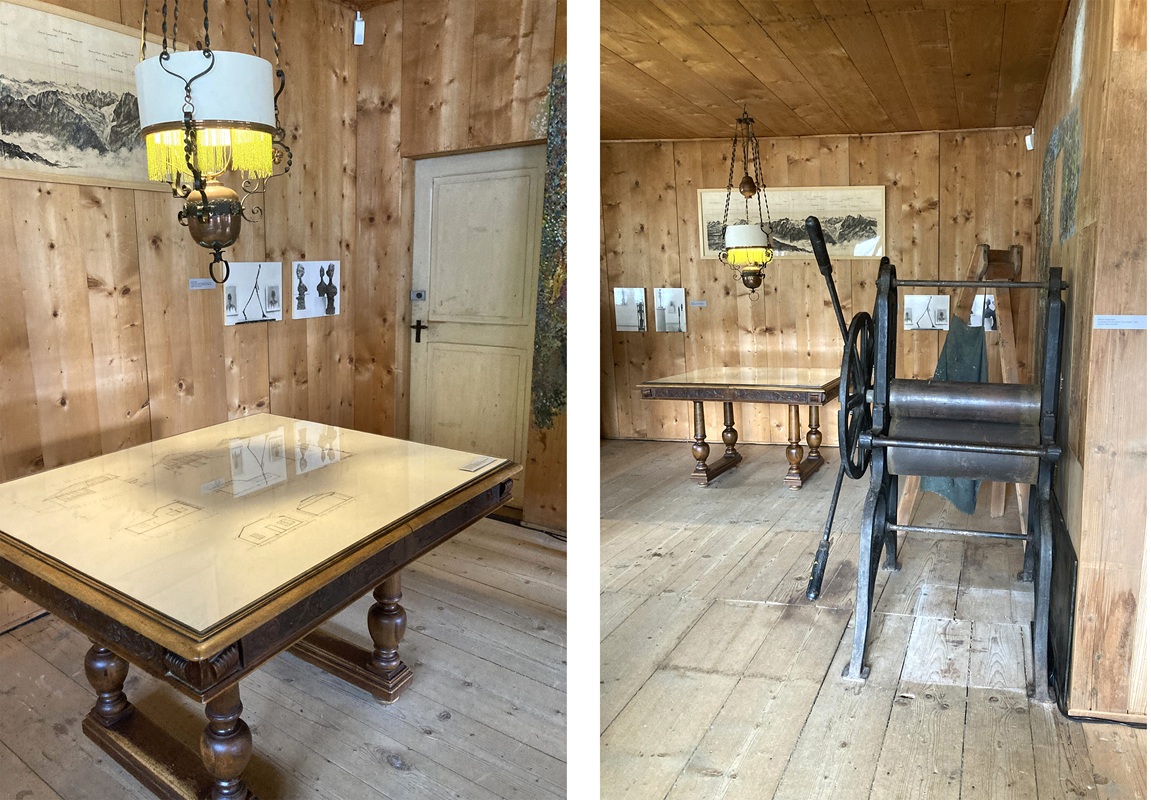
In front of the windows stands a desk that originally stood in the house. In the corner of the room is a field easel, which, as can be seen from the initials burned into it, belonged to Giovanni Giacometti but was later also used by Alberto. Above the easel hangs a (plaster?) cast of Auguste de Niederhäusern, known as Rodo, a fellow painter of Giovanni's and a gift from this friend. A black-and-white lithograph depicting the Swiss Alps and an old printing press pay homage to the wartime period, when hardly anyone could afford to buy paintings by artists. Giovanni G. produced lithographs of the Bergell mountain panorama for hotels and was able to make a few sales.
Another elegant table, formerly from the flat, completes the back room. It is accompanied by a beautiful yellow lamp, which was also immortalised in interior scenes or still lifes by both Giacomettis. Old architectural plans by Giovanni lie on the table. He had created his dream studio from the old stable according to his own designs.
Insights into the life of Giovanni Giacometti
Giovanni's talent for drawing was discovered during his youth at the cantonal school in Chur. With his parents' permission, he then attended art school in Munich, where he met the painter Cuno Amiet, with whom he formed a long-lasting friendship. After two years in Munich, they both travelled to Paris, where they lived together and painted in the same rooms. The Blog «Artists Influence Artists Part 2: From Paris to Berlin» briefly describes the special friendship between the two artists.
However, life in the French capital came at a cost that Giovanni's family could no longer afford, so Giovanni was forced to end his art studies and life in Paris. He returned to Stampa. Unhappy, he attempted to further his artistic development by travelling to Italy. While Giovanni Giaocmetti experienced the influences of Italian Renaissance painting, Cuno Amiet told him about the Impressionists. Based on these stories, he tried his hand at the Impressionist style of painting. In 1894, he met the artist Giovanni Segantini, who succeeded in motivating Giovanni again. The self-taught artist is said to have told him – in words to this effect – that he had, after all, enjoyed four years of art lessons. That was more than Segantini himself. Ultimately, painting ability does not depend on whether one has studied or not.
With this thought, Giacometti literally blossomed again. He began painting Alpine and mountain landscapes using a line drawing technique and allowed light to dominate his paintings. A perfect example of his beautiful mountain paintings is the artwork «Pizzo Bacone», which depicts part of the Bregaglia mountains. The painting was created in the immediate vicinity of his birthplace and home, Stampa.
In 1900, the painter married Annetta Stampa, the daughter of his former teacher, a strict man. In 1906, Giacometti acquired a stable next to their home, which he converted into a studio according to his own plans. Large windows were installed, wood panelling was added and a gas lamp was fitted. The ceiling reached a height of four metres. On Amiet's advice, the rear room of the studio was given a lower ceiling to save on heating costs. The renovation is said to have cost around 1,000 francs in total.
From 1950 onwards, Giovanni Giacometti's eldest son, Alberto, used the studio. After Alberto Giacometti's death, the studio lost its purpose and remained closed for the next 50 years.
Today, the studio, which has been restored as faithfully as possible to its original state based on old photographs, can only be visited as part of private tours.
Both Giacometti artists left their mark on the studio, which has been preserved to this day and can be admired.
View of the cemetery with the graves of the Giacometti family
On the way to the nearest village, Borgonovo, lies the cemetery where the Giacometti family is buried. A stony path leads up the hill to the bright church. A large gate opens the friendly-looking cemetery to visitors.
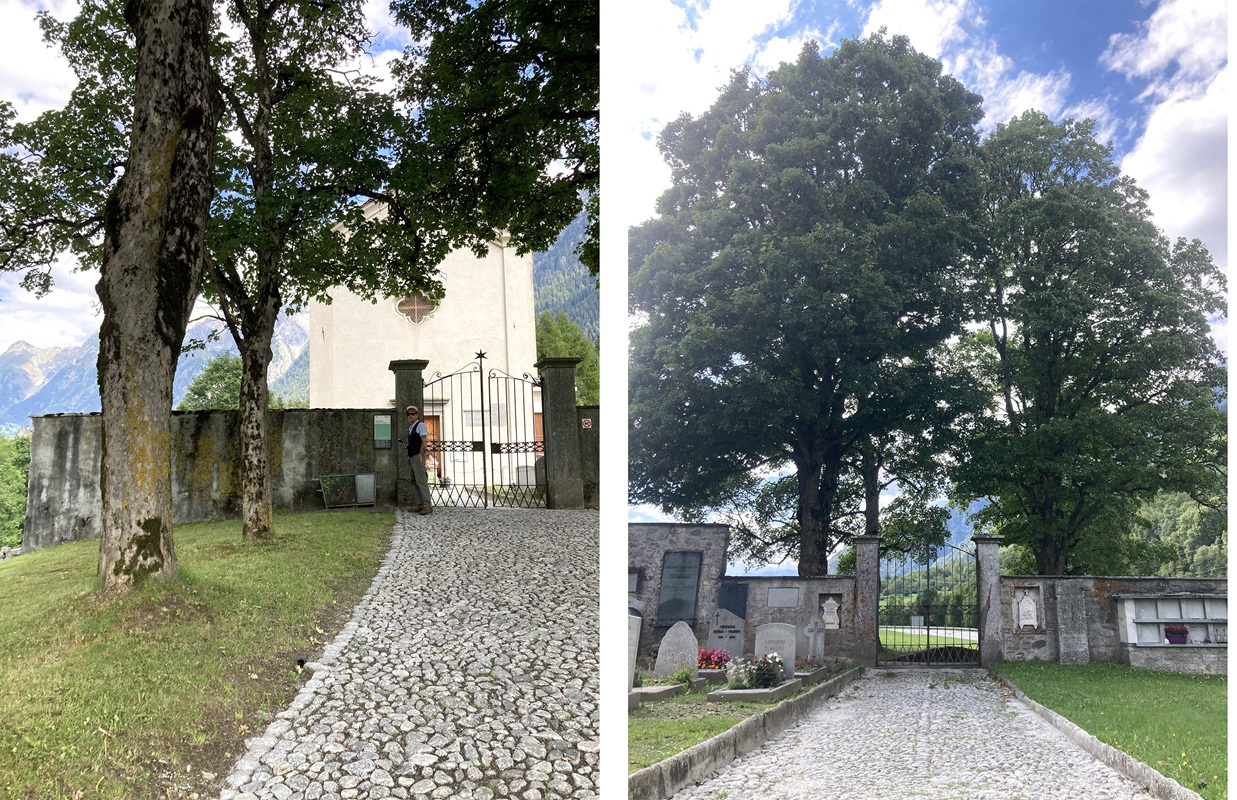
If you go to the right-hand side, you will quickly find the family graves. Here lie Giovanni Giacometti (1868-1933), pittore (painter), with his wife, Annetta Giacometti Stampa (1871-1964), together with their youngest son Bruno Giacometti (1907-2012) and his wife Odette Giacometti (1910-2007).
The hexagonal gravestone on the family grave was designed by Alberto Giacometti himself. A few graves further on lies Alberto (1901-1966), scultore pittore (sculptor, painter). The memorial plaque was dedicated by his younger brother Diego (1902-1985), scultore (sculptor), who is buried directly behind it.
Diego followed his older brother everywhere he went – to Paris, to Geneva – and served as his loyal assistant. He was himself an artist, but never achieved a real breakthrough. Instead, we owe it to him that many of Alberto's works of art have been preserved. Alberto was very self-critical and worked on his sculptures for hours, if not days. With each step, he removed material from his plaster figures until there was hardly anything left, and then started all over again.
“Poor Alberto! Everything he did (in five years) in Geneva fits into 15 wooden boxes”, exclaimed Menga Negrini, recounting what the family had said.
He was apparently never really satisfied and was always searching for the ‘right thing.’ Nevertheless, Diego kept some of the figures and organised an exhibition that brought Alberto overnight fame. While Alberto's art was still being spurned in Paris, it sold out within a few days. From that moment on, everything Alberto created was in demand.
On the same stone wall, not far from Diego's grave, are the graves of Sister Ottilia Berthoud-Giacometti (1904-1937), her husband Francis Berthoud (1894-1959) and their son, Silvio Berthoud (1937-1991), who was born on the same day as Alberto (10 October). Ottilia died shortly after the birth of her son at the age of only 33. His mother, Annetta Stampa, then moved to Geneva to raise little Silvio.
The painter and cousin of Giovanni G., Augusto Giacometti (1877-1947), is also buried in the same cemetery. The beautiful inscription ‘Qui riposa il Maestro del Colori’ (Here lies the Master of Colours) was dedicated to him.
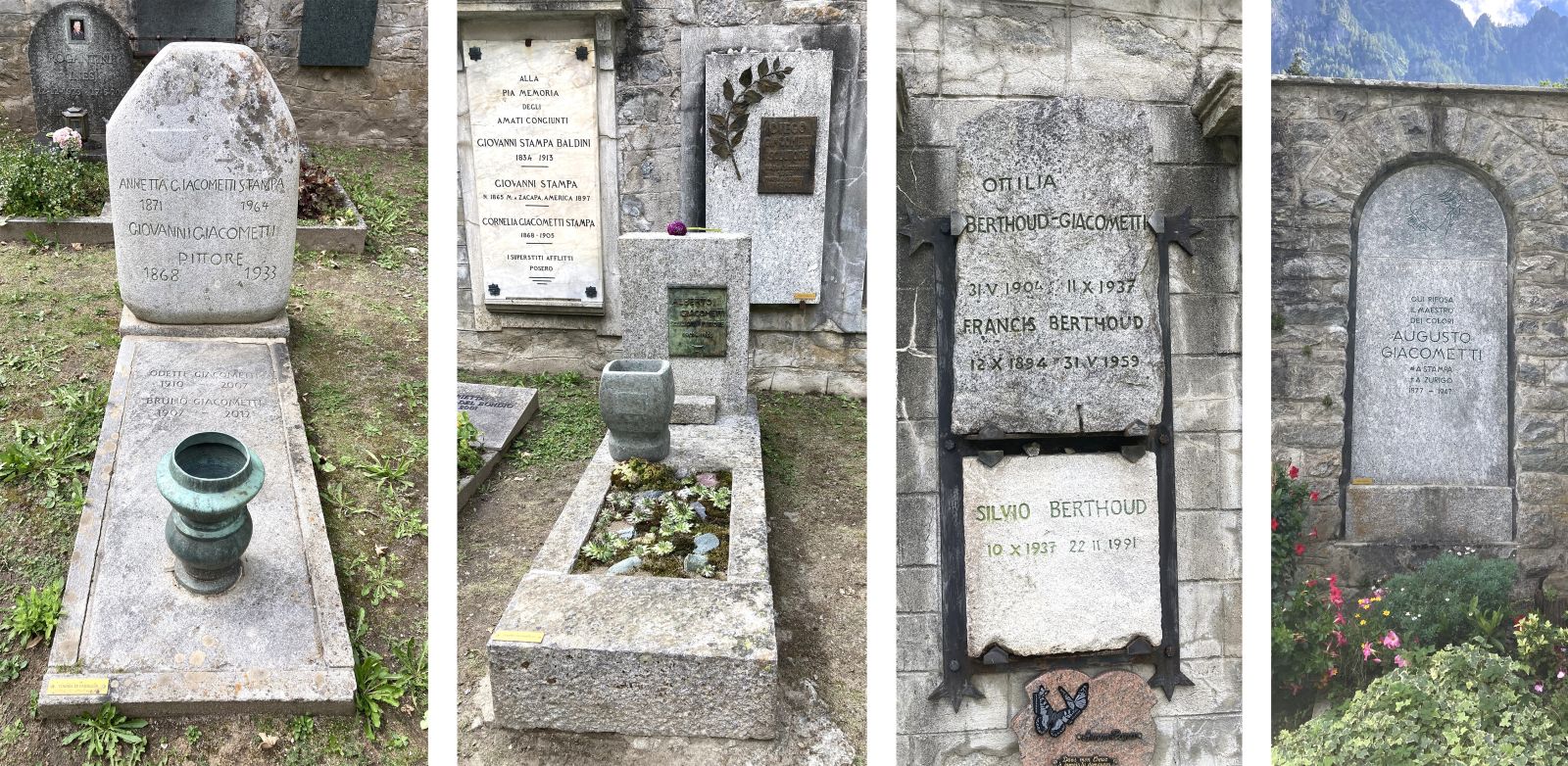
Here, between Stampa and Borgonovo, against the backdrop of the beautiful Bergell mountain panorama, the great Giacometti family of artists now rests.
These are places where so much history has been written. A place that holds the beginning and end of great artists.
While the blog reveals some exciting anecdotes about the Giacomettis, learned from Menga Negrini, the studio tour on site reveals many more details that are only touched upon here.
References:
- Oral Source: Menga Negrini
- Atelier Giacometti | Museo Ciäsa Granda - Bregaglia
- Home – Centro Giacometti
- Der Sentiero Giacometti - Bregaglia Engadin Turismo
Cover Image Blog: ©Charlotte Kämpf
Author: Lea Kämpf

